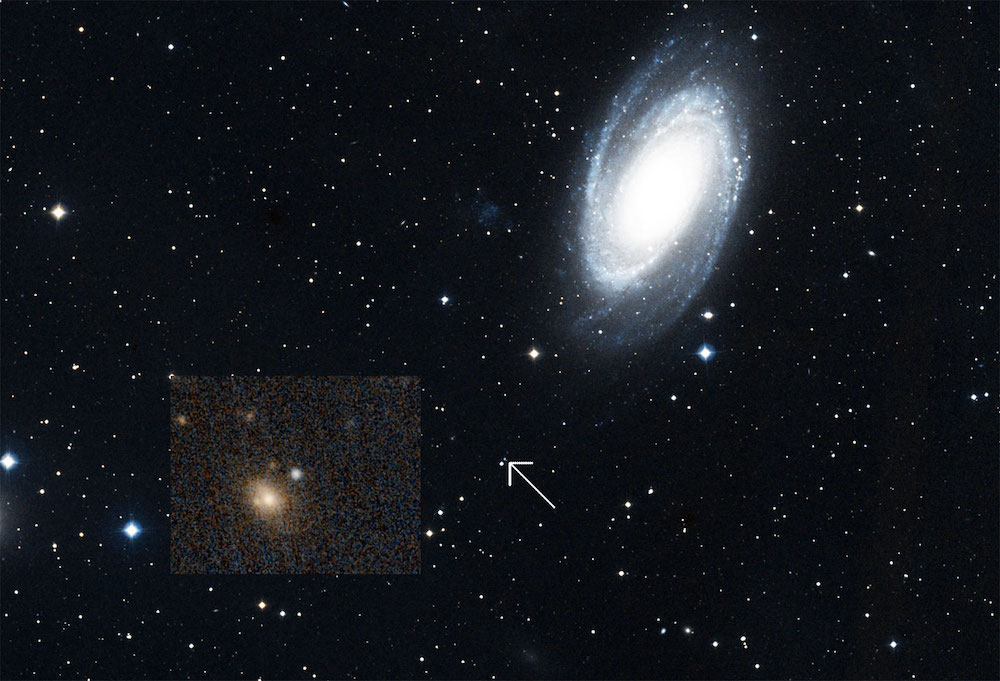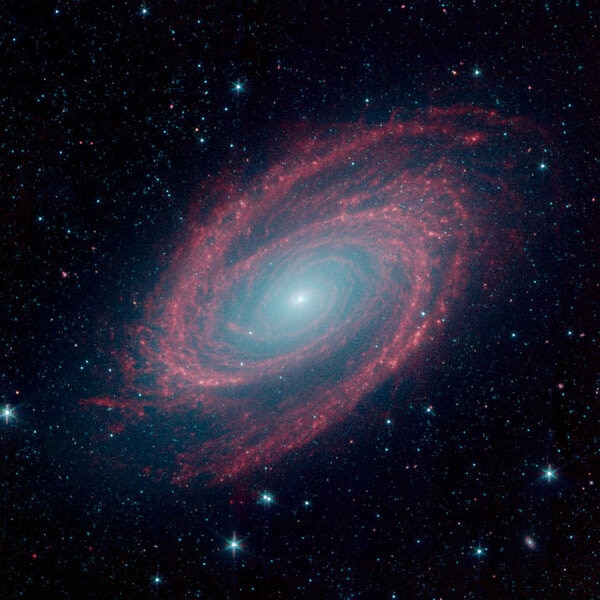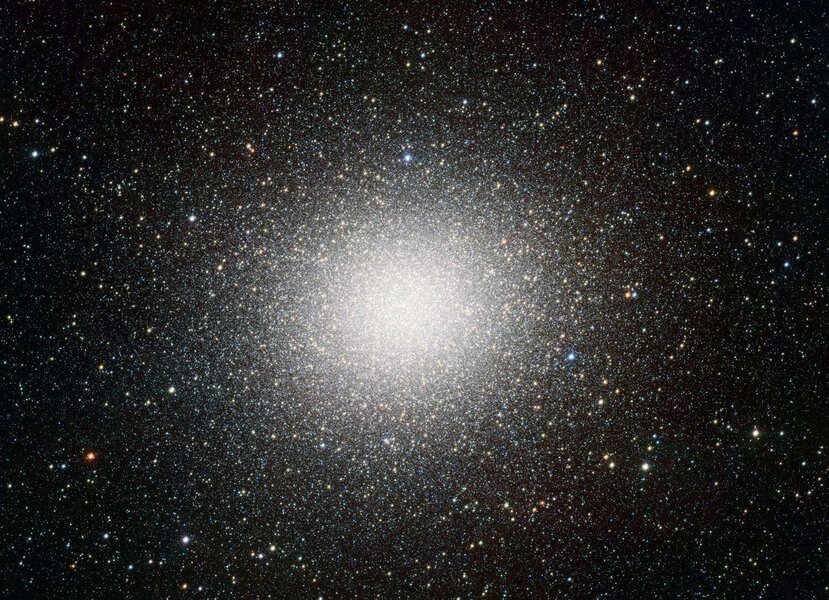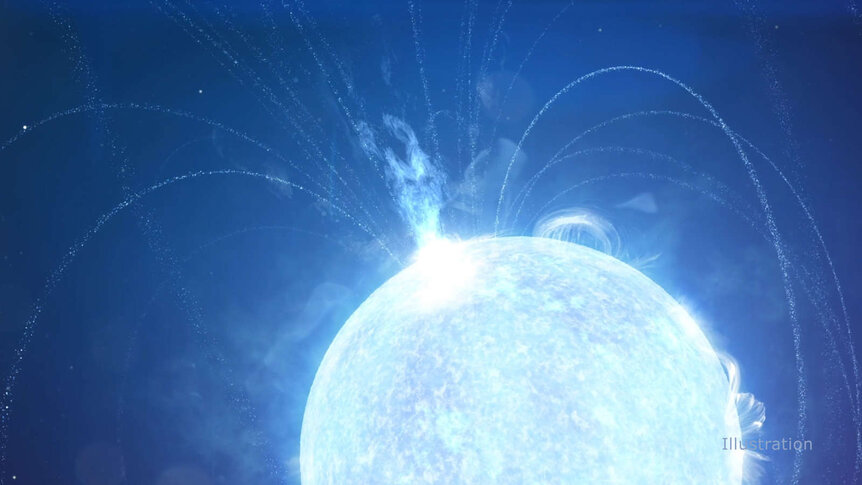Create a free profile to get unlimited access to exclusive videos, sweepstakes, and more!
The weird gets weirder: A fast radio burst traced to a nearby galaxy's globular cluster
The location is solved, but what's causing it?

One lesson astronomy teaches you is to never sit back and think, "Yeah, we totally understand this."
That's certainly true for Fast Radio Bursts (or FRBs), a weird phenomenon first discovered in the early 2000s. These are very luminous but incredibly short bursts of radio energy that are generally seen coming from distant galaxies. At first even understanding where there were coming from in the sky was difficult; they came and went so quickly that localizing them was difficult.
A breakthrough came in 2016 when one FRB was seen to repeat, blasting off several pulses of energy over time. More repeaters were found, and then one was found in the Milky Way, our home galaxy. One has now been seen to repeat — get this — 1,600 times!
All of these observations led astronomers to conclude that the sources of FRBs are magnetars, a type of superdense neutron star with mind-crushingly powerful magnetic fields, some with a quadrillion times the strength of Earth's magnetic field! Magnetars are thought to be young neutron stars, which are capable of generating these ridiculous characteristics.
And then there was FRB 20200120E.
It was first seen on January 20, 2020 (hence the name), and was quickly determined to be a repeater. The astronomical community became excited because its location in the sky was apparently close to the nearby galaxy M81, a very well-studied and spectacular spiral only 11.7 million light years from Earth. Given that most FRBS are hundreds of millions of light years away, that made FRB 20200120E close, cosmically speaking.
Still, there was the problem of getting an accurate position. Was it coming from M81 itself or nearby?
A team of astronomers using telescopes from around and above the Earth now have the definitive answer: FRB 20200120E isn't coming from M81, but from [PR95] 30244, a globular cluster orbiting the galaxy [link to paper].
Thing is, that's really weird. Globular clusters are comprised of tens of thousands or up to millions of stars all packed together in a tight space, orbiting their mutual center of gravity. There are probably lots of neutrons stars in any given globular, but they'd be old. Very old. Ancient, even: Globular clusters are typically 10–12 billion years old, and any neutrons stars in them are likely to be around that age as well; way too old to produce a magnetar.
So what gives? The location observations are pretty conclusive; they used a technique called interferometry which links up radio telescopes across the world to achieve phenomenal resolution. They spotted five FRBs coming from the same spot over a few months in early 2021, and all five were fast; the longest one was a third of a millisecond in duration, just 300 microseconds! And the positional data are accurate to about one milliarcsecond, an angle so small it's like seeing a US quarter coin on the North Pole from New York City. The data show the FRB is located within a projected distance of about 6 light years of the cluster's core, so relatively near the center. There is a galaxy in the sky near the cluster, but it's far, far in the background, well over two billion light years away, and cannot be the source.
Clearly, there's some piece of info missing here, and it's possible that there could be young neutron stars in a globular. For example, the authors posit that if there had been a binary star with two Sun-like stars, eventually they'd both die and leave behind white dwarfs, which are extremely dense objects the size of the Earth but with about the mass of the Sun. Over billions of years the two dead stars would spiral together and eventually merge, and could create a neutron star. It's also possible that a white dwarf in orbit around a more normal Sun-like star could draw gas off the star, eventually growing so massive it collapsed into a neutron star.
Another possibility is that it's not a magnetar at all. A white dwarf orbiting a neutron star so closely that may be in a pre-merger phase could sometimes erupt as material from the white dwarf falls onto the neutron star, or a gas giant planet orbiting a highly magnetized neutron star could also be losing material and creating FRBs.
The thing is, no other light is seen from FRB 20200120E. No X-rays or gamma rays, extremely high-energy forms of light, which you'd expect from a lot of these scenarios. That's weird too. Maybe these bursts are faint and also very rapid, so hard to see. It's hard to dedicate X- and gamma ray telescope time to staring at a source that may or may not be visible, so it may be a while before new information about FRB 20200120E comes from other wavelengths of light.
So the mystery of where FRB 20200120E is located has been solved, only to be replaced with another mystery: What's the engine behind it? If it's still a magnetar or neutron star that only raises further questions, ones that are as of now hard to answer. As usual, during a scientific investigation that's currently unfolding, more observations will likely help. But it's nice to see the database of knowledge about these enigmatic bursts broadening, and to be honest it's also cool to see the Universe still throwing us curveballs. It makes all this more fun.





























